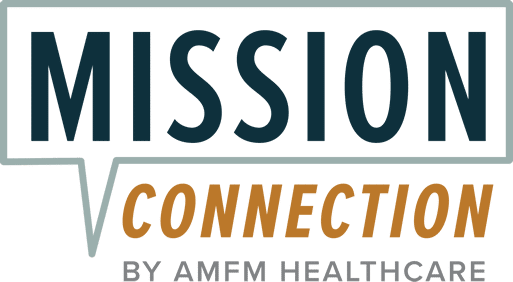What Is Citalopram?
How Celexa Works and What It Can Be Used to Treat

Anyone can experience the symptoms of a mental health condition at any time. But this doesn’t make it feel any easier when you’re gripped by feelings of dread, hopelessness, or panic.
While you might think that needing professional support for managing your mental health makes you weak, it’s the opposite that’s true. Seeking support is a sign of strength. It means you’re willing to put in the work to get better.
Medication, such as citalopram, is sometimes considered for balancing out the symptoms of mental health conditions enough to allow someone to work on their issues in therapy. Other times, it’s factored in when therapy is enough by itself. Either way, it’s carefully considered for your needs and monitored throughout treatment.
Mission Connection can help you understand whether medication such as citalopram is the right fit for you. This article can also shine a light on what citalopram is and how it’s used by breaking down:
- How citalopram for anxiety and depression works and how it can be used for other mental health conditions
- How long it takes for Celexa to start working
- What the common side effects of Celexa are
- How to stop citalopram safely
- How citalopram compares to other antidepressants
- FAQs you can ask your healthcare provider about citalopram
- Where to find professional support for managing mental health with medication

About Citalopram: How Celexa for Anxiety and Depression Works
Citalopram is often sold under the brand name “Celexa” and is sometimes prescribed to people with depression or panic attacks.
SSRIs, in general, are called “second-generation” antidepressants. This is because they were created to tackle the often significant side effects caused by antidepressants created in the 1950s, such as tricyclics. They’re just as effective for reducing the symptoms of anxiety and depression for many people – but they’re typically better tolerated.
Although citalopram was originally created to help people manage the symptoms of depression, it’s often used off-label for other conditions. Off-label prescribing is a common practice, and it just means that a medication might be useful for a condition it wasn’t originally created for. For instance, citalopram is commonly prescribed off-label for anxiety, obsessive-compulsive disorder (OCD), panic disorder, certain heart conditions, and premenstrual dysphoric disorder.3
Citalopram for OCD
Obsessive-compulsive disorder (OCD) is a common mental health condition which is characterized by intrusive thoughts and compulsive actions. These thoughts and actions can seriously disrupt someone’s ability to live their daily life, often making medications necessary for managing symptoms.
SSRIs are usually the first-line medications for tackling the symptoms of OCD, particularly fluoxetine.4 However, citalopram has also shown positive effects in reducing symptoms of OCD. For instance, one study demonstrated that it alleviated issues in over 75% of people and was also well tolerated.5
Medication for OCD typically works best when it’s combined with psychological interventions, such as cognitive behavioral therapy (CBT). Therefore, if you’re concerned about the effects of OCD on your life, it’s worth talking to a healthcare provider about how you can balance medication with psychotherapy.
Celexa for Panic Attacks
Panic disorders are conditions that present with sudden and repeated panic attacks, which are often followed by intense fears of further attacks and potential physical harm. As people with panic disorder often avoid situations that could trigger attacks, their daily life is often affected.
Citalopram is sometimes prescribed off-label to treat panic disorders as it has an uplifting effect on mood. In fact, studies have shown that long-term treatment with citalopram effectively reduced fears associated with panic attacks in nearly 300 people.6
However, as with other mental health conditions, panic disorder may be best tackled through a combined approach of medication and therapy to get to the root cause of phobias.
How Long Does It Take for Celexa to Start Working?
If a mental health condition, such as depression or anxiety, is impacting your ability to function or interest in activities, the question How long does Celexa take to work? is likely at the forefront of your mind.
Truthfully, it’s difficult to predict how long citalopram will take to work from person to person. We’re all unique, with different physical makeups and symptoms. It takes time for citalopram to build up the amount of serotonin in the brain, so while some people might see benefits in as little as one to two weeks, others could take six weeks or longer.
So, to put it another way: Citalopram doesn’t work immediately. But this doesn’t mean that it won’t work for you. The early effects of citalopram might be subtle, but they include the following.
Signs Celexa Is Working:
- An upturn in mood
- Improved energy levels and focus
- Better quality sleep
- More control over appetite
- Feeling more “like yourself”
If these signs celexa is working don’t start to settle in by the six to eight week mark, it may be worth discussing your concerns with your healthcare provider. They may reassure you that it takes longer for the med to work for your condition, increase your dosage, or switch you to another medication. Open communication leads to positive results.
What Are the Common Side Effects of Celexa?
All antidepressants come with the risk of side effects, and citalopram is no exception. Not everyone will experience these, but some might get one or more – especially in the early days of treatment. These symptoms usually fade after the adjustment period, but if they’re severe, or refuse to shift, it may be worth getting in touch with your healthcare provider. They can monitor your physical and emotional responses, ensuring you benefit from treatment.
Also, Celexa side effects can range from mild to severe. The Food and Drug Administration (FDA) places a “black box warning” on all antidepressants. This is because mood enhancers pose a risk of increasing suicidal thoughts, especially in people under the age of 24. If you notice severe disturbances in thoughts or behaviors after starting citalopram in yourself or someone else, it’s important to reach out to your provider as soon as possible.
Having said as much, the following are common citalopram side effects.
Celexa Side Effects:7
- Gastrointestinal issues, such as nausea, vomiting, and diarrhoea
- Heartburn
- Loss of appetite and weight
- Increased perspiration and thirst
- Sleep disturbances
- Fatigue and physical weakness
- Tremors or uncontrollable shaking
- Dry mouth
- Muscle or joint pain
- Heavy menstruation
- Runny nose
- Sexual dysfunction
If you experience one or more of these side effects, you may be tempted to stop taking citalopram. Let’s discuss the best ways of doing this next.
Stopping Celexa Suddenly: Is It a Good Idea?
If you find that citalopram is causing side effects or isn’t working as you’d like, you might consider coming off it suddenly. This isn’t a good idea. Your brain takes time to adjust to an increased amount of serotonin, so it also needs time to rebalance. Therefore, coming off citalopram could cause a return of symptoms and withdrawal symptoms.8
Not everyone will get citalopram withdrawal symptoms – it depends on how long you’ve been on the medication and what dosage you’ve been taking. However, while they’re not usually life-threatening, these withdrawal symptoms can be highly unpleasant and include the following.
Citalopram Withdrawal Symptoms:9
- Return of mental health symptoms
- Irritability
- Nausea and vomiting
- Dizziness
- Headaches
- A pins and needles sensation on the skin called “paresthesia”
How to taper off citalopram in the best way requires patience and professional guidance. Mission Connection can help you create a tapering plan that considers your symptoms and how long you’ve been on the medication. We can also consistently monitor your responses to tapering. Slow and steady is key for the best outcomes when stopping antidepressants.
Citalopram vs Escitalopram: How Does Celexa Compare to Lexapro?
When considering antidepressants, you may encounter both citalopram and escitalopram in your research. While both medications are used to treat depression, they actually function in quite different ways.
For instance, escitalopram may be more effective in treating a wider range of conditions, such as social anxiety disorder and generalized anxiety. Additionally, while both drugs have a half-life of one day, citalopram needs twice as high a dose as escitalopram to achieve the same effect.10 Plus, both vary somewhat in regard to their side effects – citalopram tends to create more irregular heart rhythms, for example.
So, while on paper, escitalopram might sound like a more versatile option, when it comes down to citalopram vs escitalopram, the best choice depends on you. Your symptoms, needs, and reactions to medication might be what tips the scale in the favor of one medication over the other.
Questions to Ask Your Healthcare Provider About Citalopram
When it comes down to it, choosing a suitable antidepressant for your needs can feel like finding a black cat in a coal cellar. How are you supposed to tell what will work for you without trying it first? To be fully transparent, finding the right antidepressant can be a process of trial and error. But knowing what to ask can help. Hopefully, the topics in this article have clarified some answers, but the following questions cover issues that haven’t been discussed so far.
What Are the Citalopram Dosage Guidelines?
The citalopram dosage guidelines depend on your age, symptoms, and response to medication. While 20mg is usually the go-to starting dose, a prescriber might increase this dosage if your condition is more severe or you’re not responding to treatment as you’d like.
Does Citalopram Cause Weight Gain?
Can Celexa cause weight gain? is a worry on many people’s minds when first starting treatment. The good news is that citalopram isn’t directly linked to weight gain. However, it could cause a boost in mood, which may balance out a loss of appetite. For some people, this is a good thing. Yet, if you’re concerned, a mental health provider like Mission Connection can help you create a healthy lifestyle and nutrition plan.
Can You Drink Alcohol With Citalopram?
Combining citalopram and alcohol use is discouraged, as alcohol can decrease the benefits of the medication and increase the risk of side effects like drowsiness and sedation.
Does Celexa Affect Sleep?
Mental health conditions such as anxiety and depression often go hand in hand with sleep disturbances. Many people might turn to antidepressants for this very reason, so you may want to know how Celexa and insomnia are linked. While antidepressants such as SSRIs are associated with sleep disturbances early on in treatment, these usually settle, and sleep should improve overall. In fact, studies show that citalopram significantly improves sleep during a 12 week period.11 However, if your sleep doesn’t improve, it’s worth talking to your healthcare provider about altering your dose or switching medications.
Mission Connection: Professional Support for Your Mental Health Journey
When the symptoms of mental health conditions pile up, you may feel like there’s no clear path to better well-being. It doesn’t have to feel this way. The option of medications may be a daunting one, but they can help you get your symptoms under enough control to allow you to get to the root of the problem.
Mission Connection can support you on this journey. We understand how choosing the right medication for your needs can feel like a minefield, but we’re here to help make it as comfortable for you as possible. We offer medication guidance and management, but also promote alternative treatment options to help you recover and live the fulfilled life you deserve.
Our treatments include residential, outpatient, and telehealth services, ensuring that care is delivered in a way that suits your schedule. Medication works best when it’s combined with therapy, so we can discuss the best approach for your symptoms, including:
- Cognitive behavioral therapy (CBT)
- Transcranial magnetic stimulation (TMS)
- Dialectical behavioral therapy (DBT)
- Eye movement desensitization and reprocessing (EMDR)
If you’re ready to talk about Mission Connection’s treatment options or just have more questions to ask about medication, our team is here to help. Give us a phone call today or fill out our confidential contact form.

References
- Albert, P. R., Vahid-Ansari, F., & Luckhart, C. (2014). Serotonin-prefrontal cortical circuitry in anxiety and depression phenotypes: Pivotal role of pre- and post-synaptic 5-HT1A receptor expression. Frontiers in Behavioral Neuroscience, 8, 199. https://doi.org/10.3389/fnbeh.2014.00199
- Psychology Today. (n.d.). SSRIs. https://www.psychologytoday.com/gb/basics/ssris
- Sharbaf Shoar, N., Fariba, K. A., & Padhy, R. K. (2023, November 7). Citalopram. In StatPearls. StatPearls Publishing. https://www.ncbi.nlm.nih.gov/books/NBK482222/
- Anxiety and Depression Association of America. (2023, August 14). Medication for treatment of OCD: Understanding the options. https://adaa.org/learn-from-us/from-the-experts/blog-posts/consumer-professional/medication-treatment-ocd
- Koponen, H., Lepola, U., Leinonen, E., Jokinen, R., Penttinen, J., & Turtonen, J. (1997). Citalopram in the treatment of obsessive-compulsive disorder: An open pilot study. Acta Psychiatrica Scandinavica, 96(5), 343–346. https://doi.org/10.1111/j.1600-0447.1997.tb09927.x
- Leinonen, E., Lepola, U., Koponen, H., Turtonen, J., Wade, A., & Lehto, H. (2000). Citalopram controls phobic symptoms in patients with panic disorder: Randomized controlled trial. Journal of Psychiatry and Neuroscience, 25(1), 25. https://pmc.ncbi.nlm.nih.gov/articles/PMC1407706/
- U.S. National Library of Medicine. (2022, January 15). Citalopram. MedlinePlus. https://medlineplus.gov/druginfo/meds/a699001.html
- Royal College of Psychiatrists. (n.d.). Stopping antidepressants. https://www.rcpsych.ac.uk/mental-health/treatments-and-wellbeing/stopping-antidepressants
- National Alliance on Mental Illness. (n.d.). Citalopram (Celexa). https://www.nami.org/about-mental-illness/treatments/mental-health-medications/types-of-medication/citalopram-celexa/
- Guzman, F. (n.d.). Citalopram and escitalopram: A summary of key differences and similarities. Psychopharmacology Institute. https://psychopharmacologyinstitute.com/publication/citalopram-and-escitalopram-a-summary-of-key-differences-and-similarities-2179
- Wu, J., Chang, F., & Zu, H. (2015). Efficacy and safety evaluation of citalopram and doxepin on sleep quality in comorbid insomnia and anxiety disorders. Experimental and Therapeutic Medicine, 10(4), 1303–1307. https://doi.org/10.3892/etm.2015.2686






